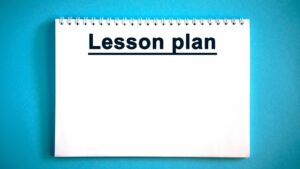by Heidi Brumbaugh, Ph.D.
Helping your students to improve their vocabulary is one sure way to advance their language learning. Giving your students word lists to study is a time-honored technique. However, the words that they learn must be relevant to their learning goals.
The primary goal of the use of word lists in the classroom is to optimize the time spent learning vocabulary such that learners are focused on the words that will be most helpful to their language learning progress.
This article will talk about two approaches to using word lists in the classroom:
- Custom lists tied to classroom content
- Expert-created lists of general words or words for special purposes
Your classroom, your lists
Many teachers incorporate weekly vocabulary lists into lesson plans. It’s important that the words you choose relate to your course content, both to keep the list relevant and to give students opportunities to encounter the words in a variety of contexts. One straightforward technique is to extract words used in assigned text. You can do this manually, or use one of the online tools that are available to do this, such as Vocab Grabber from vocabulary.com.
While technology can be a great help, don’t neglect the pedagogical benefit of assigning your students this task. To quote Teacher Kelly of the Joy of ESL blog:
Expert-created lists
Did you know that the ten most common words in English make up about 25% of written text? And that the hundred most common words make up about 50% of text? Furthermore, the most common 1,000 words make up 70% to 90%, depending on the text.
Word lists for language learners are thus based on the frequency of the word in the language. To quote vocabulary expert Paul Nation, “by learning the high-frequency words first, the learners will have the greatest opportunities to enrich their knowledge through later meetings with the words.” (Making and Using Wordlists for Language Learning and Testing, 2016.)
Since the early 1900s, linguists and educators have been developing word lists for school children and language learners. Early efforts were made by Thorndike (1921) and Dolch (1939). In 1953, Michael West published the General Service List of 2000 highly frequent words, specifically targeted toward English Language Learners.
These early efforts were amazing when you consider they were accomplished without the use of digital computers.
Nowadays, linguists rely on computational tools to analyze corpora (large bodies of text) to study word frequency and to analyze word distribution in order to generate the most helpful word lists possible. Several scholars have worked on updating and improving the General Service List, the new-GSL (Brezina and Gablasova, 2013), and the NGSL (Browne, Culligan, & Phillips, 2013).
Vocabulary researchers used these tools to expand word list options for specific purposes:
- the Academic Word List (Coxhead 2000)
- medicine (Quero 2015, and others)
- business (Hsu 2011, Browne & Culligan 2016)
- engineering (Hsu 2014; Ward 2009)
as well as other fields.
In choosing a word list for your students, it is important to consider the source. Linguists today use sophisticated techniques to choose words for lists, including careful consideration of source corpora (in terms of both size and variation of content, linguistic register, etc.). While it may be easy to grab lists off popular sites such as Quizlet, if you don’t know the thinking that went into the list creation, you can’t be sure if it will be appropriate for your students.
Speaking of your students…
Working the lists
These lists, while helpful, may be intimidating for students. For example, Browne’s New General Service List (NGSL) has 2800 words. It is important to target lists to your class learning level, break the list into workable-size sections, and teach your students how best to study and remember vocabulary words. Here are some related posts on my vocabulary blog to give you and your students some tips and resources:
Beginning in Fall of 2019, my word learning app, Vocab Victor, supports the excellent word lists developed by Charlie Browne and his team:
- New General Service List
- Business Service List
- New Academic Word List
- TOEIC Word List
Each list is broken into manageable sub-lists of about thirty words each. For more information, see Vocab Victor’s New Word Lists Will Make your Life Easier.
Do you assign word lists to your students? How do you choose the lists? How do your students memorize the words?




